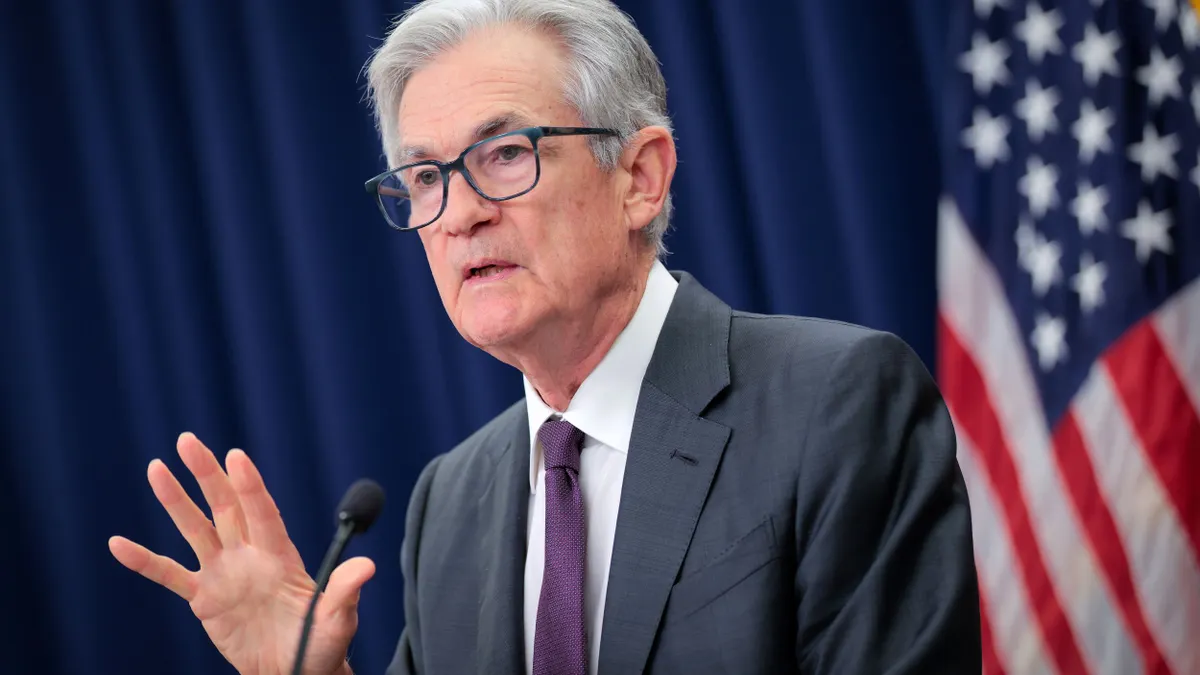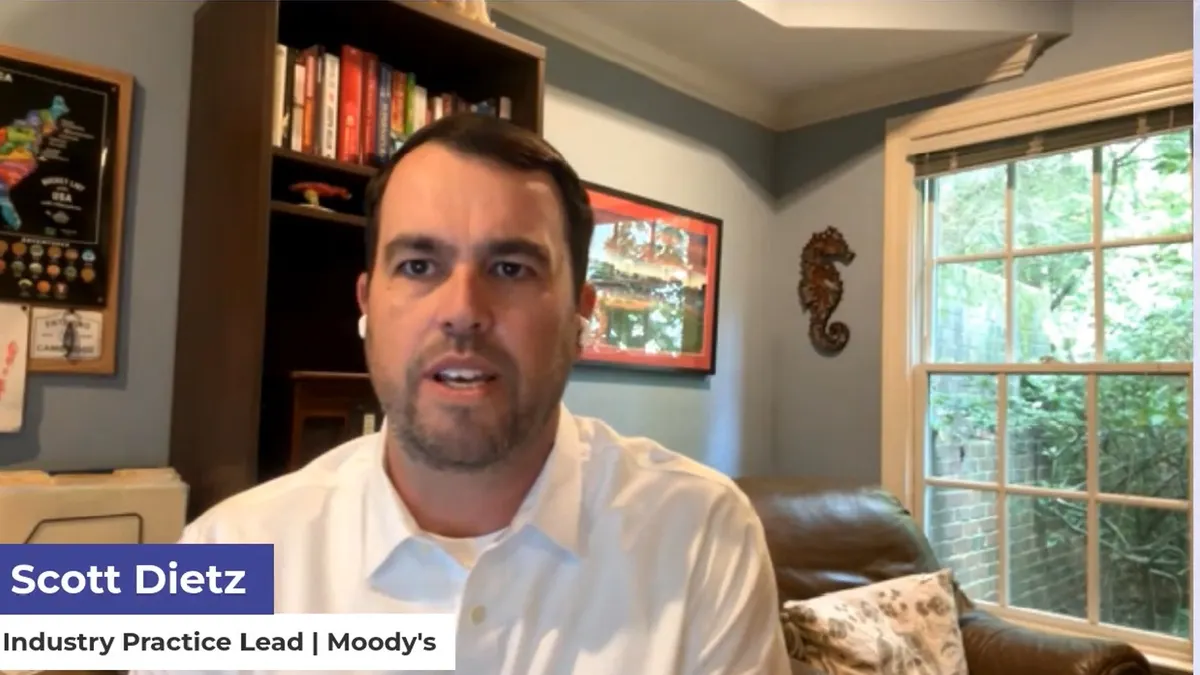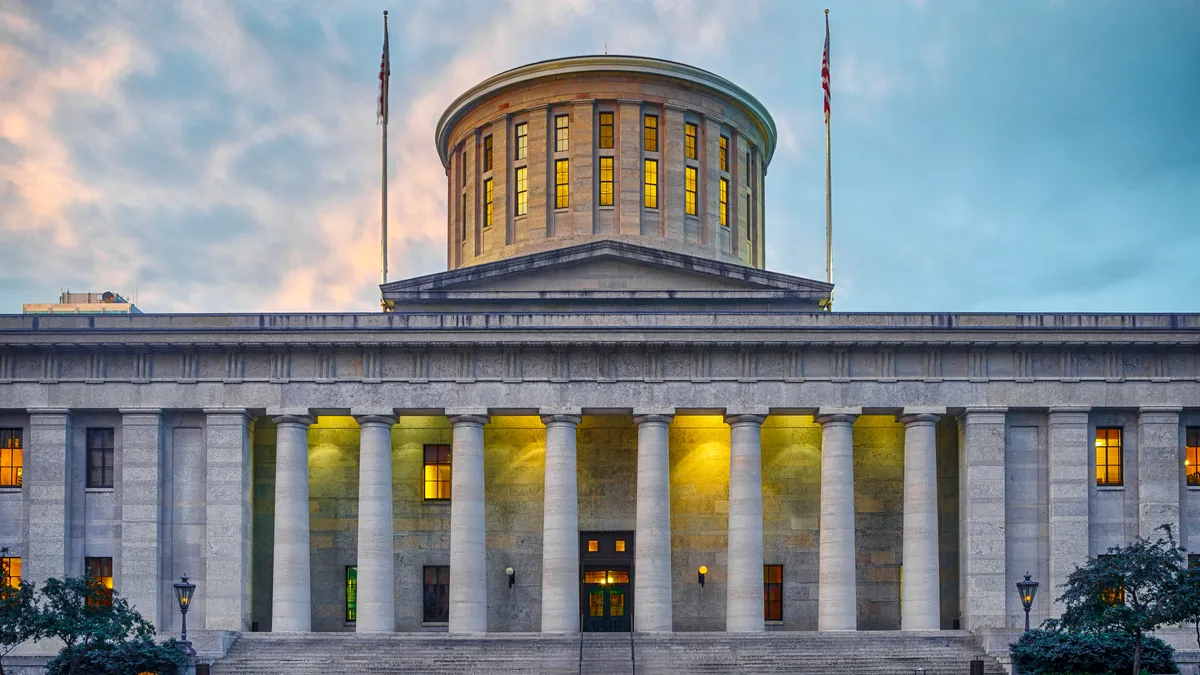Dive Brief:
- The Federal Reserve on Wednesday trimmed the main interest rate by a quarter point to a range between 3.75% and 4% following a two-day meeting. The decision marks the second rate reduction by the central bank this year, coming after the Fed — citing softness in the labor market — cut interest rates by a quarter point in September.
- Though there was “a strong solid vote” in favor of the most recent quarter point raise, Fed Chair Jerome Powell warned of “strongly differing views” on how the central bank should proceed regarding rates in its final meeting for the year, scheduled for Dec. 10, in a press conference following the decision. Members Stephen I. Miran and Jeffrey R. Schmid offered dissenting votes for the most recent cut, with Miran advocating for a half point cut, while Schmid advocated for no change to the federal funds rate.
- “A further reduction in the policy rate at the December meeting is not a foregone conclusion, far from it,” Powell said. “Policy is not on a preset course.”
Dive Insight:
The tension between the central bank’s dual mandate of reducing inflation while achieving maximum employment has continued to tighten in recent months, as the balance of risks between those two goals has shifted, Powell said.
The Wednesday decision comes after inflation rose less than expected in September, though still above the Fed’s 2% target, according to Bureau of Labor Statistics data released Oct. 24. The Consumer Price Index rose by 3% on an annual basis, while so-called core CPI — which excludes food and energy prices — also rose by 3% for the month.
Job gains, however, have slowed significantly since earlier this year, while labor demand has also contracted, Powell said.
“I would just point out that we have a situation where the risks are to the upside for inflation and to the downside for employment,”Powell said. “We have one tool. You can't do both of those…you can't address both of those at once.”
In a median projection released in September, the Fed previously forecast that it would make two further quarter point cuts in 2025, bringing the federal funds rate to 3.6% by the end of the year, as well as marking up their forecast for economic growth. Differing forecasts and views on risks held by the 19 Federal Open Market Committee members, however, have thrown a potential December cut into question, Powell stressed Wednesday.
“I always say that it's a fact that we don't make decisions in advance, but I’m saying something in addition here in that it’s not to be seen as a foregone conclusion. In fact, far from it,” he said of a December reduction in the federal funds rate.
Traders in interest rate futures see approximately 66% odds that the central bank will cut rates by another quarter point during its December meeting, according to data from the FedWatch tool.
Powell also highlighted other ongoing complications for the Fed as it looks to meet its dual mandate, including uncertainty regarding tariffs, the potential impact of artificial intelligence investment and the government shutdown which left the central bank without several key sources of data. That included employment figures for September, though the Fed still receives state level information on initial job claims, job openings and survey data.
“What do you do when you’re driving in a fog? You slow down,” Powell said of the shutdown, though noting that it is a temporary situation.
The central bank is also taking pains to ensure fluid tariff and trade policies don’t become an “ongoing inflation problem,” Powell said. Citing data from previous surveys, the Federal Bank of Atlanta noted tariffs could contribute to a significant rise in inflation that could last until next year.
Asked about the potential impact of AI on both the economy and the labor market, Powell acknowledged that a “significant number of companies” have announced either layoffs or hiring freezes, and “much of the time they're talking about AI and what it can do,” he said. “So we're watching that very carefully.”
While that “absolutely could have implications for job creation, we don't really see it in the initial claims data yet,” he said. Regarding investments into the technology, “I don't think that the spending that happens to build data centers all over the country is especially interest [rate] sensitive,” he said. “It's based on longer run assessments that this is an area where there's going to be a lot of investment and that's going to drive higher productivity.”













